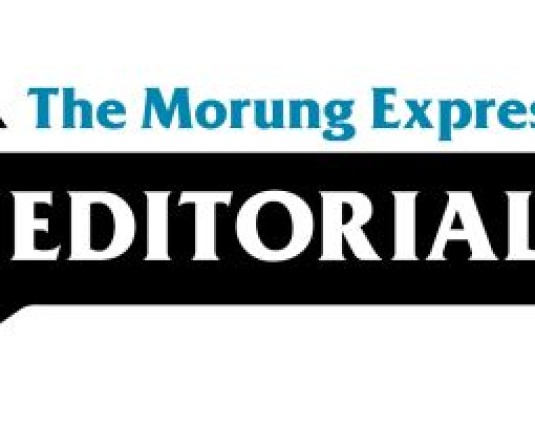“Why does debate over an issue gets more participatory and the participants more emotional when the topic is government job quotas and reservation?” this column had posed earlier, wondering whether the numerical strenght in the government sector is the yardstick of progress for a particular tribe.
The issue at debate here, among others, is the demand for 45% reservation in the proposed Nagaland Staff Selection Board (NSSB) by a conglomerate of six students’ bodies citing “deliberate suppression and deprived in all aspects for the last six decades.” It was met with ‘outright’ objection by another conglomerate and call for rationalisation of reservation policy. Another called the demand ‘exorbitant.’
Under pressure, the State Government bought some time by putting the NSSB on hold pending the submission of the cabinet sub-committee report.
As the imbroglio persists, it is important to delineate the issue from both legal and constitutional provisions as well as existing practices to arrive at a logical conclusion.
It entails ascertaining two thematic facts: Why and how the reservations are being implemented in India.
The basic aim of the reservation is empowering persons belonging Scheduled Castes (SCs), Scheduled Tribes (STs) and Other Backward Classes (OBCs) and ensure their participation in the decision making the process of the State.
The constitutional and legal provisions were bestowed as ‘means to recognise the historical injustice meted out to these groups and to implement provisions by which groups would have better access to resources and opportunities that were hitherto denied to them,’ Economic and Political Weekly explained. It later expanded to include other non caste categories such as reservation of Ex-servicemen, Person with Disability, Sportsmen, and Minorities and so on. It is a deliberate policy intervention to help level the playing field for those historically disadvantaged categories of the citizen.
While the reservations for the SCs and STs were put in place in the Indian constitution, immediately after independence, it became a contentious and polarising issue with the implementation of the Mandal Commission recommendations advocating 27% reservation for OBC.
As explained by the Supreme Court of India in a past judgement, for the sake of convenience, there are two types of reservation – Vertical and Horizontal.
Reservations for STs, SCs and OBCs under constitutional provisions may be called vertical reservations while other forms of reservation are Horizontal.
Notably, the Supreme Court in its landmark 1993 judgment in Indra Sawhney vs Union of India laid down that the total number of reserved seats/places/positions cannot exceed 50% of what is available. In a most recent judgement, the SC also categorically observed that the “open category is open to all, and the only condition for a candidate to be shown in it is merit, regardless of whether reservation benefit of either type is available to her or him.”
Secondly, it would be prudent to understand how the quantum of reservation was decided for different categories.
According to a Union Ministry brochure on reservation, after Independence, instructions were issued providing for reservation of 12½% of vacancies for SCs in respect of recruitment made by open competition. After the Constitution of India was promulgated, a resolution provided 5% reservation for STs apart from the percentage fixed for SCs already in force. It was not revised after 1951 census as a comprehensive bill revising the lists of SCs and STs was under consideration. After the 1961 census, it was increased to 15% and 7½ respectively for SCs and STs based on their proportion to the Indian population. While 1971 Census did not warrant a review and the census could not be carried out in Assam in 1981, it was not revised. Besides, various relaxations and concessions in terms of age, fees, and other areas.
Presently reservation is provided to SC, STs and OBCs largely based on proportion of population at the rate of 15%, 7.5% and 27% respectively in case of direct recruitment via open competition, with the 1993 SC judgement in context. The issue of reservation for economically weaker sections (EWS) by the centre, argued by many as exceeding the 50% ceiling, and other States’ own initiatives, are under consideration in the court of law.
Accordingly, debates on the reservation, on one hand, should not be anchored on self-defeating unequivocal denunciation affirmative action per se, but contextualising the issue within the existing socio-economic status of the state. On the other hand, it is pertinent to ensure that such policies are implemented within the existing legal and constitutional provisions. Both sides have to manoeuvre within the existing framework to arrive at an acceptable and pragmatic solution.






